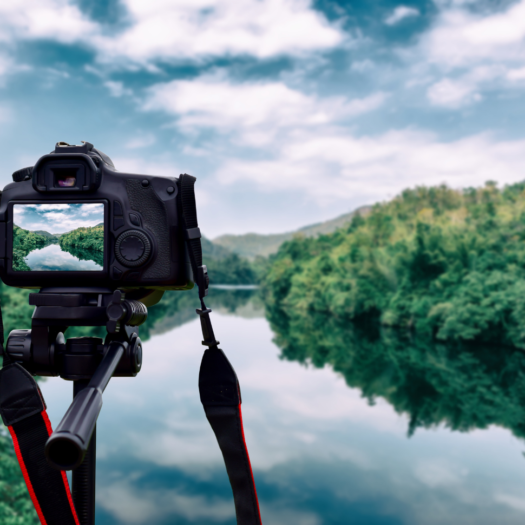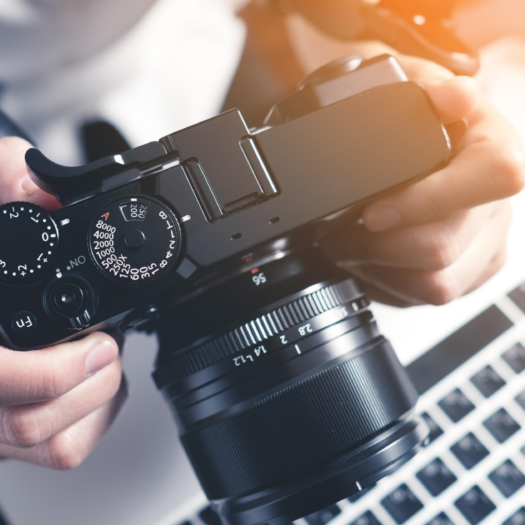5 Photography Careers to Consider
Are you looking to make photography a career? You may be surprised by the number of possible careers available in the field. Whether you want to work for yourself or someone else, many paths can lead to success. In this article, we will explore five different potential careers as a photographer and give an overview of what each entails so you can find what’s right for you!
1. Professional Photographer
Being a professional photographer can include a wide variety of jobs, from personal portrait photography to photojournalism in war zones. A professional photographer has a high level of experience and usually specializes in one area, such as weddings or real estate photos.
Professional photographers can work for themselves or with a company. In either case, they are responsible for acquiring new clients and managing their business to make sure it runs smoothly. For example, some professionals may handle all the marketing while others hire an assistant to attend meetings to free up more time shooting weddings!
To become a professional photographer, you need extensive experience in photography and sales skills so that potential customers will want your services instead of someone else’s. You also should be familiar with equipment such as high-end cameras, lenses, and lighting gear since you’ll likely use these items every day on shoots.
As mentioned above, this career path is excellent if you enjoy working alone but not great if you like collaboration because much of the work is done alone!
A professional photographer typically requires a Bachelor’s degree in photography or another related field such as art. You also need to complete many hours of internships and volunteer programs before you can find paying jobs. When it comes to making money, most professional photographers earn salaries that range from $20-50k per year, depending on their experience and expertise. Many professionals also supplement income with sales commissions earned for finding new clients.
2. Photojournalist
Photojournalists are responsible for taking photos that tell a story. Their work can be found in newspapers, magazines, and online news outlets to illustrate current events or create beautiful everyday life images.
Like professional photographers, photojournalists typically specialize in one area, such as sports photography. Still, some shoot many different photos depending on the market they serve (i.e., fashion vs. war). Photojournalists also need experience with journalism skills since their job is usually to cover stories rather than take pretty pictures!
For example, if Warren Buffet walked into your studio, you wouldn’t ask him what he wanted to be photographed; it’s his job to say, “take my picture!” Similarly, you don’t have time to think about the best angles or lighting when covering breaking news. You need to be able to snap a photo and move on quickly before something else happens!
Photojournalists usually work for local newspapers, cable news stations, and wire services such as Associated Press (AP). Photojournalism is an excellent career option because there will always be a demand for photographs that tell stories in new ways. There are even opportunities overseas since photojournalists can provide valuable insights into what’s happening outside of America! This job requires extensive experience, so most professionals have Bachelor’s degrees in photography and take courses in journalism, which helps them learn how to approach their jobs from different angles.
As with professional photographers, income varies greatly depending on your level of expertise. Some make less than $20k per year, while top photojournalists can earn over $100k.
Photojournalist typically requires a bachelor’s degree in photography, journalism, or communications with an emphasis on the latter since you’ll need to know how to approach your work from different angles! You also should have years of experience shooting photos for newspapers and other media outlets before transitioning into this career path.
3. Photo Editor
Photo editors are responsible for choosing photos that appear in newspapers, magazines, and other media outlets. This job typically requires a bachelor’s degree in journalism or communications with an emphasis on photography since you’ll need to know how to choose the best shots from a photographer’s portfolio as well as being able to communicate your thoughts.
This career path is excellent if you enjoy working alone but not great collaboration because much of the work can be done alone! In addition, photo editors usually don’t have time to take their photos, so they must rely on photographers for this task which means it might affect availability or costs depending on what types of shoots you’re doing at any given moment.
Income varies greatly depending on your level of expertise; some make less than $20k per year, while top photo editors can earn over $100k.
Photo editor typically requires a bachelor’s degree in journalism or communications with an emphasis on photography since you’ll need to know how to choose the best shots from a photographer’s portfolio as well as being able to communicate your thoughts! You also should have years of experience working with photographers before transitioning into this career path. Photo editing is excellent if you enjoy working alone but not great if you like collaboration because much of the work can be done alone. There might be conflicts about availability and costs depending on what types of shoots you’re doing at any given moment.
4. Digital Artist
Digital artists create graphics and design concepts for advertisements, newspapers, and magazines for various media types. This career path is excellent if you enjoy working alone but not great collaboration because much of the work can be done alone! In addition, digital artists typically don’t have time to take their photos, so they must rely on photographers for this task which means it might affect availability or costs depending on what types of shoots you’re doing at any given moment.
Income varies greatly depending on your level of expertise; some make less than $20k per year, while top digital artists earn over $100k.
Digital artist typically requires a bachelor’s degree in graphic design or a related field with an emphasis on computer graphics and digital imaging since you’ll need to know how to create designs using computers as well as being able to communicate your ideas. You also should have years of experience working with photographers before transitioning into this career path. Digital art is excellent if you enjoy working alone but not great if you like collaboration because much of the work can be done alone, and there might be conflicts about availability and costs depending on what types of shoots you’re doing at any given moment.
5. Freelance Photographer
Freelance photographers are self-employed individuals who shoot photos for various media outlets, including newspapers, magazines, and businesses. Damon Becnel says this career path is excellent if you enjoy working alone but not great collaboration because much of the work can be done alone! In addition, freelance photographers typically don’t have time to take their photos. They must rely on photographers for this task which means it might affect availability or costs depending on what types of shoots you’re doing at any given moment.
Income varies greatly depending on your level of expertise; some make less than $20k per year, while top freelance photographers can earn over $100k.
If you’re looking for a career that combines creativity and travel with some stability, photography might be the perfect fit. There are many different types of careers in this field to consider. We hope these options have helped you get started thinking about what type of photographer will suit your needs best!


